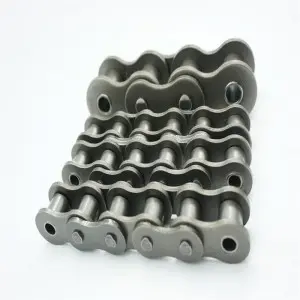Agriculture has always played a vital role in sustaining human beings, providing us with the nutrients we need to survive. However, have you ever wondered how food gets from the farm to our plate? This is where complex webs known as agricultural supply chains come into play. In this blog post, we delve into the depths of the agricultural supply chain, revealing its importance and exploring its various components.
What is an agricultural supply chain?
The agricultural supply chain covers all the steps involved in moving produce from the farm to the consumer. It involves a complex network of farmers, retailers, processors, distributors and customers, all working together to ensure a steady flow of produce while minimizing losses and inefficiencies.
Components of the agricultural supply chain:
1. Production and Harvesting: It all starts with the hardworking farmers who dedicate time, energy and resources to growing crops and raising livestock. From sowing seeds to cultivating crops, the production and harvest stages set the stage for the entire supply chain.
2. Processing and packaging: After crops are harvested or raised for livestock, they need to be processed and packaged to ensure their shelf life and marketability. This phase involves activities such as cleaning, sorting, grading and preparing produce for distribution.
3. Transportation and logistics: Moving produce from the farm to the processing facility, to the market and finally to the consumer is a critical stage in the supply chain. Transportation and logistics companies play a vital role in ensuring timely and efficient deliveries, often utilizing a combination of trucks, trains, ships and planes.
4. Storage and warehousing: Since crops are seasonal and harvested in batches, storage and warehousing facilities are required to maintain a stable supply throughout the year. Proper storage conditions, including temperature and humidity control, are critical to prevent spoilage and extend shelf life of produce.
5. Distribution and retailing: As agricultural products move through the supply chain, they are distributed to regional markets, wholesalers, retailers, and sometimes exported to other countries. This phase bridges the gap between the supply and demand of agricultural products, ensuring that they are available to consumers.
The importance of an efficient agricultural supply chain:
Efficient agricultural supply chains are critical for a number of reasons:
1. Food security: Well-functioning supply chains ensure a continuous and reliable supply of affordable agricultural products, keeping communities and countries food secure.
2. Minimize losses: Effective supply chain management helps minimize losses by reducing waste and damage during transportation, storage and distribution. This is especially important in regions with food shortages.
3. Economic growth: Agriculture is not only a source of food but also an important economic sector. A strong supply chain contributes to the growth of the agricultural industry, job creation and economic development.
4. Quality and safety: Through the supply chain, products can be monitored, tested and regulated to ensure compliance with quality standards and safety regulations. This helps maintain consumer trust in the food they consume.
Agricultural supply chains are the backbone of our food system, ensuring the efficient flow of produce from farm to fork. Understanding its complex components and the role they play in ensuring food security, minimizing losses, promoting economic growth and ensuring food safety is critical. By nurturing and strengthening agricultural supply chains, we will ultimately nourish the roots of our food and the well-being of our global community.
Post time: Aug-15-2023

